
How to look for records of... Intellectual property: trade marks, 1876-1938
How can I view the records covered in this guide?
How many are online?
- Some
1. Why use this guide?
The National Archives holds a huge collection of official trade marks, created by British and foreign businesses between the mid-19th and mid-20th centuries. This treasure trove of thousands of designs and artworks, in the form of drawings, paintings and prints, includes everything from complex illustrations to simple logos. By following the advice in this guide you can find and see the original designs of trade marks submitted to the government for official registration.
The collection presents a rich and colourful history of British commercial graphic design, marketing and manufacturing, for both the home and overseas markets. It provides insights into the tastes and consumer habits of the United Kingdom and beyond in the Victorian, Edwardian and inter-war eras and can be used to help trace the history of specific companies and brands.

The Bass & Co. trade mark, registered in 1876. This representation is held at The National Archives in record series BT 82. The full catalogue reference for this trade mark is BT 82/1.
Among the collection you can find early logos used by British household names like Slazenger, Birds Eye, Colman, Rowntree and many others. We hold copies of countless other designs for lesser known companies, many long since out of business.
For records of trade marks registered since 1938, go to the Intellectual Property Office, known until 2007 as the Patent Office (see section 6).
2. What is a trade mark?
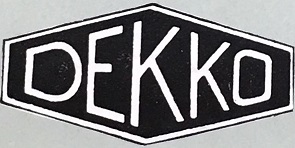
A trade mark registered in 1938 (catalogue reference BT 82/1383, design number 585505). Dekko manufactured cine cameras and projectors between the 1930s and 1950s.
A trade mark is the recognisable symbol of a specific manufacturer or brand, an assurance to consumers of the quality they can expect from a product as well as protection for the manufacturer against fraudulent copying of their products or use of their brand.
As the examples here and throughout the guide demonstrate, trade marks of the kind found in our collection are often characterized by one or more of the following features:
- a word written in a particular style and colour
- a made up word (for example, Lego or Vaseline)
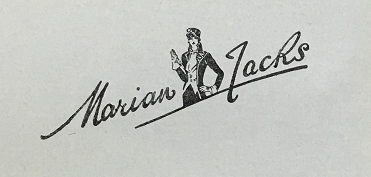
The trade mark for the women’s fashion label Marian Jacks, registered in 1938 (catalogue reference BT 82/1384, design number 585504).
- the use of a common word for a particular type of product, for example a soap called Sunlight registered by the company that became Lever Brothers
- a unique image
- a signature
3. What do we hold?
We hold tens of thousands of the original trade mark designs sent to Stationers’ Hall and the UK Patent Office for official registration – these designs are known as representations.
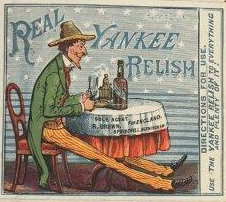
This trade mark for Real Yankee Relish was registered at the Patent Office in 1884 (catalogue reference BT 82/143, design number 35648).
Registers were used to record details of the designs and of the manufacturer or other company registering the trade mark – we hold just four of them plus two indexes. Most of the registers from this period were destroyed under section 6 of the ‘Public Records Act of 1958’.
From 1842 trade mark designs were registered at Stationers’ Hall, in the City of London, and from 1876, at the UK Patent Office. We hold records of trade marks registered at both places but they constitute separate collections.
Before the Trade Marks Registration Act of 1875 there had not been any legislation specifically covering trade marks; registration had taken place under copyright law. Records pre-dating this act, held at Stationers’ Hall, are therefore kept with the rest of our Copyright Office records – see our separate copyright records guide for advice on these records.
Some trade marks were ‘refused’ for a variety of reasons, and we hold copies of many of these refusals too.
To view the representations or registers you will need to either visit The National Archives at Kew or pay for copies to be sent to you.
4. Representations and how to locate them
4.1 About representations
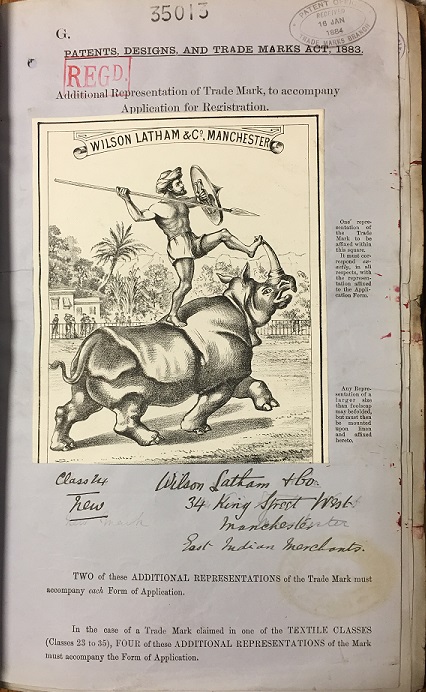
A page from a book of representations registered in January 1884. The registration number for this trade mark is 35013 (stamped at the top of the page) and it was assigned to Class 24 (written below the image, to the left). The catalogue reference for the whole book of representations is BT 82/141.
From 1876 onwards, to use a design as a trade mark with the protection of the law, you had to send a representation of the design to the Patent Office for registration.
Representations came in various forms, many on paper, others printed on fabric, a few on other materials such as tin. Some are detailed painted images, others colourful or monochrome sketches and others just typed single words.
The designs were pasted into books and given a registration number, which was also recorded in the books alongside the designs. They were assigned a ‘class’, within which similar types of products were grouped. There were fifty classes altogether (see Appendix). Further information was occasionally recorded in these books of representations, sometimes at a later date, alongside the representations themselves. Additional details might include:
- details of the owner/manufacturer or agent including their names and addresses
- dates of later changes of ownership, with subsequent names and addresses
- whether the application was accepted or refused
- whether the registration had expired
Some entries contain no additional information at all, and have no corresponding register entry, making it difficult to identify the owner, manufacturer or agent.
4.2 Finding a specific representation
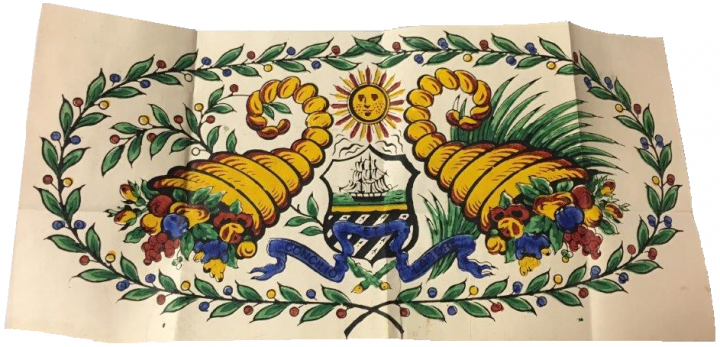
Trade mark registered in January 1884 (catalogue reference BT 82/141, design number 34958).
Finding a representation for a specific company is tricky unless you know what year the trade mark was registered, or are prepared to trawl through dozens, perhaps hundreds, of books of representations.
Start your search by consulting the Trade Mark Journal, first published, by the Patent Office, in 1876. There is a complete set at the British Library, on microfilm. The indexes allow you to search by applicant name, though if you don’t have the year of registration you may have to consult multiple indexes. From these journals you can ascertain the registration number and year.
Once you have a registration number or year, you can begin your search for representations held at The National Archives. Searches begin in our catalogue, in record series BT 82 (1876-1938) and BT 244 (cotton goods only, 1876-1922; see section 4.3).
The representations are listed in the catalogue in ranges of registration numbers and year, along with The National Archives document reference that you will need to request a viewing of any book of representations.
If you only know the registration number:
- Browse through BT 82 until you reach the range of numbers which include yours.
If you only know the date/year of registration:
- Search BT 82 by year; sort your search results by ‘Reference’ using the dropdown menu on the search results page; browse through the results until you reach the range of dates which include yours – if you only know the year of registration you will have to order multiple representation books
If you know the year of registration and the registration number:
- Search BT 82 by year; sort your search results by ‘Reference’ using the dropdown menu on the search results page; browse through the results until you reach the range of numbers which include yours.
The record series descriptions in the catalogue give useful administrative histories that will help you to understand how the records were created.
4.3 Finding a representation for a cotton trade mark
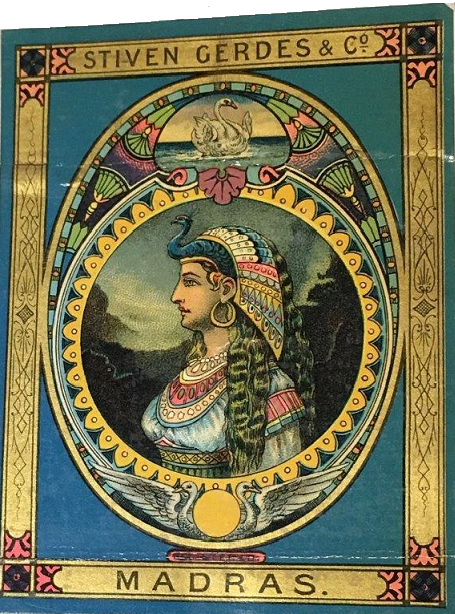
A trade mark for a cotton merchant, known as a cotton mark. This one was registered in 1881-1884 (catalogue reference BT 244/440, design number 27367).
Due to the importance of the cotton trade in Lancashire, the Act of 1875 made provision for the establishment of a branch of the Patent Office to be opened in Manchester in October 1876, to deal specifically with applications for Cotton Marks in classes 23, 24 and 25 (see Appendix). The Manchester office closed after the trade marks acts of 1938, when a single series of representations was resumed in London.
When registering a cotton mark, applicants were required to send one master representation and four copies. A number were held in the Manchester office and the others were forwarded to London for administrative purposes and for inclusion in the registers.
To find a representation for a cotton mark, search either in BT 82 (see section 4.2), which includes representations for cotton and non-cotton classes, or in BT 244 which contains representations of cotton marks registered in Manchester only. Applications received in Manchester were given an ‘M’ number for internal use only.
BT 244 is split into several subseries, one for each of the material classes covering cotton classes 23, 24 and 25 (see Appendix).
If you do not know the date or registration number of the trade mark you will first need to consult the Trade Marks Journals, held at the British Library (see 4.2).
If you know the date/year of registration, to locate a book of representations you should browse through the catalogue listings within the respective material class for the cotton product in question:
- Browse Class 23 representations from BT 244/1 to BT 244/44 (1876-1908)
- Browse Class 24 representations from BT 244/45 to BT 244/436 and BT 244/459-460 (numbers in this class begin with M)
- Browse Class 25 representations from BT 244/437 to BT 244/461 (1876-1920)
- BT 244/453-458 Class 24B (specimen Volumes) for Stripes, Borders, Words, Dogs and Foxes, Dragons heads and mermaids and lastly Coats of Arms.
A number of files were destroyed by enemy action in the Second World War.
5. Registers and how to locate them
Once the representation was received and given a number, an entry was made in a corresponding register with details of the manufacturer and/or company registering the trade mark.
The registers record:
- names and addresses of the owner or manufacturer and/or their agent
- date the trade marks were registered
- the material class the goods were placed under
- the trade mark number issued by the Patent Office
- the material class the goods were classified under (see Appendix)
- subsequent renewals of the mark and the names and addresses of subsequent owners
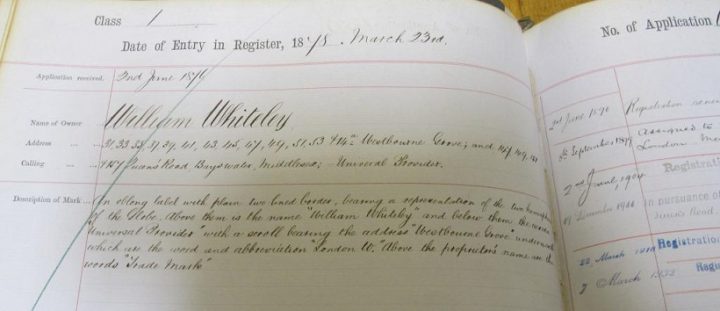
An entry from one of the four surviving registers.
Unfortunately just four specimen registers (and two indexes), all for representations in BT 82, survive. Most registers from between 1876 and 1938 were destroyed under section 6 of the ‘Public Records Act of 1958’. These four registers and two indexes are in BT 900.
Click on the links below to request the registers – they are for trade marks registered…:
- 3 October 1876, in BT 900/16
- 5 October 1876, in BT 900/15
- 1884, in BT 900/17 (an index for registrations from 15 Jan 1884 to 3 October 1884 is in BT 900/20 – the index gives name of applicant, class of goods, page, date of registration)
- 1934, in BT 900/18
- 10 November 1933 to 11 December 1935, in BT 900/19
There are no registers for the representations in BT 244 making it difficult to link a trademark to its owner unless details were written alongside the representations, which they quite often were.
6. Other places to find records of trade marks
You can use our catalogue to search for records held in other archives. Search using the terms ‘trademark’ and ‘trade mark’ (both terms are used in equal measure).
Modern-day trade marks
The Intellectual Property Office (IPO), known until 2007 as the Patent Office, holds the modern-day responsibility for the registration of trade marks. Search the IPO database to find trade marks by name of company or description of trademark. If you find the registration number this way you can then look for the original representation in our records, assuming the trade mark was registered before 1939.
Trade Marks Journal
The ‘Trade Marks Journal’ has appeared continuously, in numbered issues since 1876, published weekly, in which all newly accepted marks are reproduced. Complete sets are available at the British Library on microfilm (the British Library trade marks collection pages offer further guidance).
The publications record details of the trade marks for which protection has been sought and also identify the individuals and/or companies which have made the application, in many cases by applicant name and by type of product.
7. Further reading
Consult our legislation.gov.uk website for the texts of the various Acts of Parliament relating to trade marks.
The following texts are all available in The National Archives library.
A Century of Trade Marks 1876-1976 (HMSO, 1976)
Commerce and Culture: Nineteenth-Century Business Elites, edited by Robert Lee (Ashgate, 2011)
Marks of Excellence: The History and Taxonomy of Trademarks, Per Mollerup (Phaidon, 2013)
Trade Marks and Brands, edited by Lionel Bently, Jennifer Davis and Jane C Ginsburg (Cambridge University Press, 2008)
Appendix: Material classes
The table below shows the 50 material classes established by the Trade Mark Registration Act of 1875. To be granted trade mark protection, applicants had to register their goods under one or more of these classifications.
| Class 1 Chemical substances used in manufacturer photography or philosophical research. |
| Class 2 Chemical substances used for agriculture and horticultural purposes. Examples: Artificial manure, sheep washes. |
| Class 3 Chemical substances used in medicine and pharmacy. Examples: tinctures, extracts, barks, patent medicines, cod-liver oil. |
| Class 4 Raw vegetable and animal substances used in manufactures. Examples: Resins, oils, dyes, tanning substances, fibrous substances (e.g. Cotton hemp, flax, jute). Wool, silk cork seeds glue bone sponge. |
| Class 5 Unwrought and partly wrought metals used in manufacture. Examples: Iron and steel, pig and cast, rough, bar and rail, including rails for railways, bolt and rod, sheets and boiler and armour plates, hoops, wire; Lead, pig, rolled sheet; Copper; Zinc. |
| Class 6 Machinery of all kinds and parts of machinery except agricultural machines and implements, included in class 7. Examples: steam engines, boilers, pneumatic machines hydraulic machines, Locomotives, sewing machines, weighing machines, machine tools, mining machinery, fire engines. |
| Class 7 Agricultural and horticultural implements and machines. Examples: ploughs, drilling machines, reaping machines, thrashing machines, drainage implements, dairy implements, garden implements, cider presses, beehives. |
| Class 8 Philosophical instruments, instruments and apparatus for useful purposes or for teaching. |
| Class 9 Musical instruments. |
| Class 10 Horological instruments. |
| Class 11 Surgical instruments and apparatus. |
| Class 12 Cutlery edge tools. Examples: Knives, forks, scissors, shears, files, saws, corkscrews, tweezers, button hooks. |
| Class 13 Metal goods not included in other classes. |
| Class 14 Goods of precious metals (including aluminium, nickel) and jewellery and imitations of such goods and jewellery. Examples: plate, clock cases, pencil cases, Sheffield and other plated goods, gilt and ormolu work. |
| Class 15 Glass Examples: Window and plate glass, painted glass, glass mosaic, glass for optical purposes. |
| Class 16 Porcelain and earthenware Examples: China Stoneware, terra-cotta, statuary porcelain, tiles, bricks. |
| Class 17 Manufactures from mineral and other substances for building or decoration. Examples: cement, plaster, imitation marble. |
| Class 18 Engineering, architectural and building contrivances. Examples: diving apparatus, warming apparatus, ventilating apparatus, filtering apparatus, lighting contrivances, drainage contrivances, electric bells. |
| Class 19 Arms and military stores, not included in class 20. Examples: cannon, small arms, fowling pieces, swords, shot and other projectiles, camp equipage, military equipment, military accoutrements. |
| Class 20 Explosive substances Examples: gunpowder, gun cotton, Dynamite, fog-signals, percussion caps, fireworks, cartridges. |
| Class 21 Naval architectural contrivances and naval equipment. Examples: boats, anchors, chain cables, windlasses, rigging, logs. |
| Class 22 Carriages Examples: railway carriages, wagons, railway trucks, velocipedes. |
| Class 23 Cotton yarn and thread. |
| Class 24 Cotton piece goods of all kinds. |
| Class 25 Cotton goods not included in classes 23, 24 or 38. |
| Class 26 Linen and hemp yarn and thread. |
| Class 27 Linen and hemp piece goods. |
| Class 28 Linen and hemp goods not included in classes 26 and 27. |
| Class 29 Jute yarns and tissues and other articles made of jute. |
| Class 30 Silk, spun, thrown or sewing. |
| Class 31 Silk piece goods. |
| Class 32 Other silk goods not included in classes 30 and 31. |
| Class 33 Woollen and worsted yarns. |
| Class 34 Woollen cloths and worsted stuffs. |
| Class 35 Woollen and worsted gods not included in classes 33 and 34. |
| Class 36 Carpets, floor cloth and oil cloth. Such as Drugget, mats and matting, rugs. |
| Class 37 Leather and skins unwrought and wrought and hair and feathers. Examples: Saddlery, harness, portmanteaus furs bristles, haircloth wigs, hair mattresses. |
| Class 38 Articles of clothing. Examples: hats of all kinds, caps and bonnets, hosiery, gloves, boots and shoes, other ready-made clothing. |
| Class 39 Paper (except paper hangings, stationery, printing and book binding). Examples: envelopes, sealing wax, pens (including steel pens) ink, playing cards, blotting cases. |
| Class 40 Goods manufactured from India-rubber and futta-percha not included in other classes. |
| Class 41 Furniture and upholstery. Examples: paper hangings, papier-mâché, mirrors, japan goods. |
| Class 42 Substances used as food. Examples: Cereals pulses oils, hops, malt, dried fruits, tea, spices, sago, salt, starch, sugar, preserved meats, honey confectionery biscuits, oil cakes, pickles, vinegar. |
| Class 43 Fermented liquors and spirits Examples: Beer cider wine whisky liqueurs. |
| Class 44 Mineral and aerated waters, natural and artificial. |
| Class 45 Tobacco, whether manufactures or unmanufactured. |
| Class 46 Seeds for agricultural and horticultural purposes. |
| Class 47 Candles, illuminating oils, matches and common soap. |
| Class 48 Perfumery (including perfumed soap). |
| Class 49 Toys, games of all kinds, archery, fishing tackle. |
| Class 50 Miscellaneous, including:
|